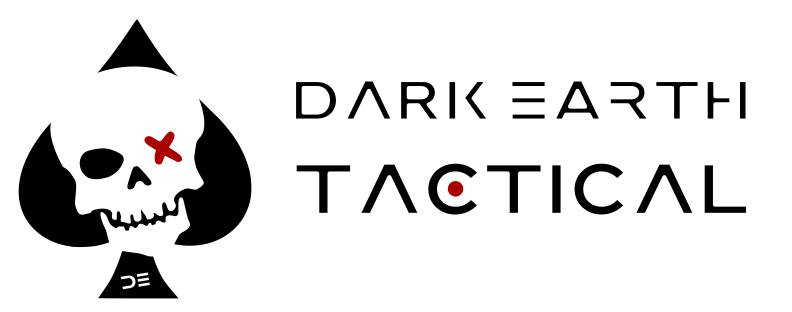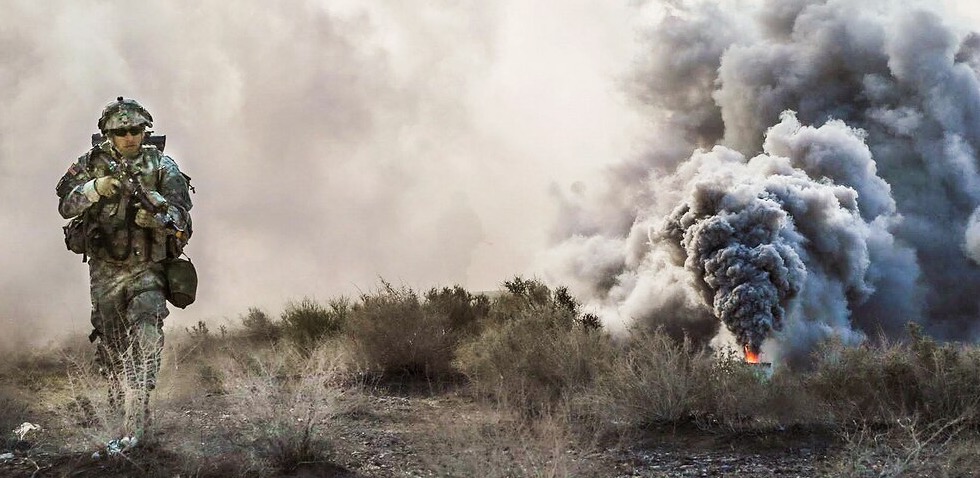Smoke grenades are small, lightweight pyrotechnics that I find many survival enthusiasts and prepper’s neglecting when it comes to bug-out contents. I have seen first-hand how deployable smoke has the ability to save lives, in more ways than one. So now that Iv’e potentially given away the value of carrying smoke, let me answer this: should you be carrying smoke as part of your bug-out gear – and if so – what are the benefits in doing so?
A smoke grenade – otherwise known as survival smoke – is typically a canister-style grenade which emits a heavy smoke cloud lasting up to 90 seconds (and sometimes longer). They are most commonly used for signalling, as a target or landing zone marker, or as a screening device for concealed movement or extraction, and yes they should indeed form a part of your essential bug-out kit.
During today’s article we are going to discuss the advantages of using smoke grenades, how and when to use them, and also what kind of smoke grenades you can make or purchase as a survival enthusiast. So let’s get started.
What Exactly is a Smoke Grenade, and Are They Legal?
- Military-Grade Smoke Grenades are waterproof canister-type pyrotechnics which are typically composed of potassium chlorate, lactose, and in many cases a dye to give the smoke colour. They are activated by a pull-ring – much like a high explosive hand grenade – which immediately activates the smoke emission at the users discretion.
- Survival Smoke Flares are very similar in quality and composition to that of military-grade smoke grenades. However, they have brightly coloured canisters which are bulkier, unlike their military counterparts which are designed to fit into tactical pouches for easy storage and rapid access.
- Civilian Smoke Bombs (or smoke candles) are a much cheaper alternative, which are far easier to obtain and do not require licensing or training of any kind. They are not restricted or controlled items, neither are they a fire hazard. The downside is that they are far less effective, and less reliable when exposed to the elements.

When it comes to the laws of owning or carrying smoke grenades, they differ entirely from one country/state to the next. It is up to you to do your research and determine what smoke system is best to use under your local laws. It is however common to find that the following applies in many cases:
- Military-grande smoke grenades such as the M18 are often illegal to own or use as a civilian
- Survival smoke flares such as the MK9 Lifesmoke often require a license/permit and proper training, and must be stored correctly
- Smoke bombs/candles such as the Enola Gaye WP40 or EG18 have no restrictions, and may be purchased/owned by anyone over the age of 18 years
Modern smoke grenades are designed not to directly emit fire or sparks, but they still remain a fire hazard and are capable of igniting dry vegetation or flammable substances if used carelessly. Always remember that these are pyrotechnic items with a spark and burning debris, so always be vigilant, particularly when using them for training purposes
When To Use Your Smoke Grenade [During a Survival or Combat Situation]
Having a few smoke grenades as part of your gear is not very useful if you do not know when and how to deploy them. Not only are smoke grenades single-use items, but they also work for only a short time, so timing is key.
I would not consider smoke grenades to be nice-to-haves, but rather extremely essential items to carry for both combat and survival use. Since many survival enthusiasts nowadays prepare for violent riots and potential unrest as well, the use of smoke in a combat context still applies.

The follow uses are most common when it comes to personal smoke emitting devices.
- Smoke Screening – on of the most common uses of smoke in a combat role is to mask movement or location. This often assists with decoy/flanking manoeuvres, or aids in extraction when pinned down under heavy fire or from a sniper threat. A simple yet highly effective smoke deployment hides friendly movement from an enemy’s line of sight, unless you are being observed through FLIR.
- Emergency Signalling – brightly coloured smoke is one of the most important distress signals you can use when lost and/or injured. There are a number of alternate methods of signalling, but smoke and flares are the most vital in signalling rescue aircraft through thick vegetation or forrest canopies, and from low ground.
By thinking a little outside of the box, you will be able to come up with some alternate uses for smoke grandes than those mentioned above. Some examples are:
- Limiting Enemy Counter Moves – deploying smoke into isolated buildings or features which enemy are moving towards to seek cover/concealment may keep them out in the open longer. Hopefully long enough for you to disable or alter their negative planned course of action.
- Friendly Fire Prevention – you can easily and quickly signal your position to friendly forces, clearly identifying yourself as a non-hostile and preventing friendly fire incidents from occurring. This should be well established in your SOP’s during mission/emergency planning.
- Flushing – smoke may be used in flushing enemy from concealed/covered locations, or for flushing animals from burrows in order to obtain food when it is otherwise scarce.
- Booby Traps – in conjunction with a low-vis trip wire and an anchor point, smoke grenades can be used as detection alarms, detonating and releasing their smoke contents when activated by unwanted visitors.
- Landing Zones – smoke is often thrown onto designated landing zones to mark the area and display wind speed and direction.
How Should You Store & Deploy Smoke Grenades
When it comes to storage of smoke grenades at home, best practices would see them treated the same as live ammunition; in a lockable safe and away from children.
When it comes to storage for use, this really depends on how you intend on using your smoke grenades. Based on what we have already discussed above, if you anticipate possibly needing the assistance of a smoke screen – or smoke employment in a combat role – then the grenades should be securely attached to your equipment in such a way that it is most easily accessible and readily available when needed. If you are more concerned about emergency signalling, hunting or booby-trapping, then a deeper internal compartment of your grab bag shouldn’t be an issue.
When it comes to actually throwing the grenade, your first step is to identify the direction and distance where you intend for your smoke to land. This decision is often directly related to wind, particularly when you require a smoke screen to conceal your position. In this case, the smoke should always be thrown into the wind, predicting where the smoke will blow once the grenade lands, while also allowing sufficient time for the smokescreen to build before moving your position.
Always let friendly forces known before you thrown a smoke grenade. This is either done by holding up the grenade and physically showing them, or by yelling “smoke” if verbal commands won’t compromise your position
Night Vision & FLIR Considerations
When it comes to using smoke as a screening device, there is something that you need to be aware of; FLIR devices (Forward Looking Infrared). If your enemy has FLIR capability, then they will most likely be able to see right through any smoke plumes that you put out. This is one of the biggest daytime advantages of using a FLIR device. However, if the threat exists – which is highly unlikely in a survival environment – then a military-grade multi-spectral smoke is required, making the smoke cloud IR impermeable.
When it comes to NVG – or Night Vision Devices – there is no concern as these are unable to defeat smoke and the screen will perform to its full potential.
Which Smoke Grenades Should You Consider Packing?
The answer to this question relies on a couple of vital factors:
- Which smoke grenades are you able to acquire?
- Which of these are legal for you to own or carry in your area?
- Military-grade smoke would be the ideal choice; they are compact, extremely reliable and put out a large blanket of smoke. Unfortunately though they are not often legal, nor easy to obtain
- Survival smoke flares would be my second choice recommendation, and although they are bulkier and a little more cumbersome, they do produce a massive and lasting smoke screen. If you are allowed to own these, and are struggling to find some, get in touch with a few boating suppliers and ask for their advice
- If these options aren’t viable, then I’d suggest trying the EG 18 civilian smoke bomb, or otherwise experimenting with some DIY methods of your own. Some decent smoke grenades can be assembled at home using potassium nitrate, sugar and a heat source
When it comes to colour selection, you may wonder which is best. The military will segregate smoke grenades into different colour categories, encouraging very specific smoke SOP’s which each serve a different purpose. One colour for example will provide a smoke screen (typically white or grey), while another will call in air support, and other may indicate an injury or medical emergency. But as a civilian survival enthusiast, I’d suggest sticking to a bright orange smoke. This can be used to provide a heavy smoke screen with an impressive ability to deploy a bright and abundant SOS signal if needed; one colour that can do it all.
So that’s enough about smoke. Now it’s time to go and find a suitable smoke grenade, test it out, train with it, and ensure that you have spares in your bug-out gear. If you enjoyed this article, please leave a comment below, and check in regularly for our latest blogs.

